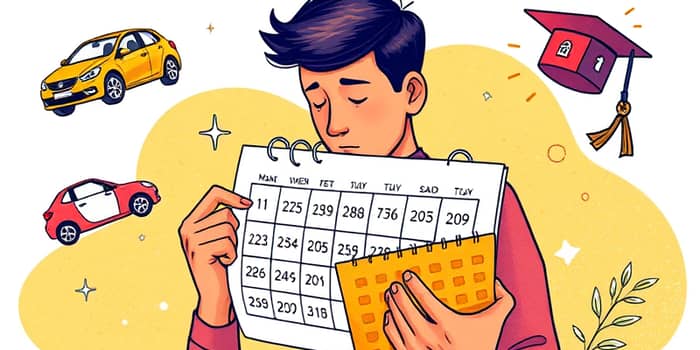
Every big purchase—whether a new car, a dream home, or advanced education—carries excitement and risk. When you coordinate these commitments with your existing debts, you safeguard your future and strengthen your financial health.
By learning to transform your financial future through careful timing and strategy, you can make major spending feel empowering rather than overwhelming.
Imagine setting out to buy a new car just as your highest-interest loan is paid off—your monthly cash flow instantly improves. Conversely, launching a mortgage right before student loan payments spike can strain your budget.
Proper timing helps you avoid cash flow crises and gives you breathing room to adapt if unexpected costs arise. It’s about more than affordability today; it’s about resilience tomorrow.
Start with a complete list of all obligations. Detail the lender, remaining balance, interest rate, minimum monthly payment, and projected payoff date.
Use spreadsheets or budgeting apps to visualize where you stand. This comprehensive view is the foundation of smart planning.
Your budget must reflect both fixed obligations (rent, utilities, debt payments) and variable expenses (food, entertainment). Calculate your total monthly income, then subtract all regular outflows.
Set aside a buffer for unexpected costs. A well-crafted budget offers peace of mind in uncertainty and helps you track progress toward debt-free milestones.
The debt-to-income ratio (DTI) measures your monthly debt payments against your gross income. Lenders generally prefer a DTI under 36%, with no more than 28% spent on housing.
Check your current DTI before applying for any major loan to ensure you remain within healthy limits. If you’re close to the threshold, consider delaying the purchase or accelerating debt payments.
Referencing typical payment ranges helps you set realistic expectations and empower your spending decisions.
Two popular methods include:
Balance emotional wins against long-term savings. Sometimes a small victory fuels the discipline needed to tackle larger debts.
Major purchases should align with significant debt milestones. For example, schedule a car purchase soon after your credit card balance is eliminated, or shop for a home when your student loan payment drops.
Use scenario planning: what if interest rates rise? What if a bonus arrives early? Preparing for both possibilities ensures you maintain control over your finances.
This proactive approach delivers lasting confidence in your choices and reduces the stress of unplanned expenses.
Never raid your emergency fund for non-essential purchases. Keep at least three to six months of living expenses in liquid savings.
Likewise, your retirement accounts should remain untouched. Major purchases should fit into a broader plan that honors your long-term goals and safeguards your future security.
Implement a rolling six-month review of your budget, debt payoff progress, and upcoming purchase plans. Adjust timelines based on bonuses, raises, or life changes.
Engage a trusted financial planner or certified counselor if you encounter roadblocks. Their guidance can be the difference between stagnation and momentum.
By coordinating your major spending with debt schedules, you nurture true financial freedom and resilience. Every well-timed decision brings you closer to a debt-free life that supports your dreams rather than holds them back.
Your journey starts today: take stock of your debts, refine your budget, and plan your next big purchase with confidence. With patience and strategy, you’ll turn ambitious goals into attainable realities.
References













